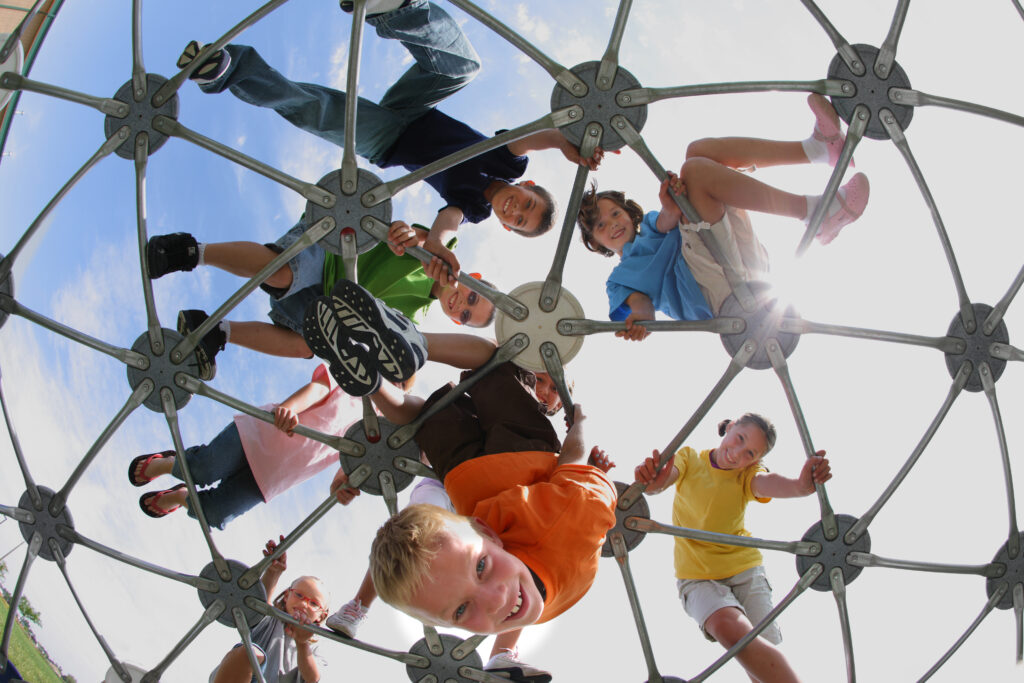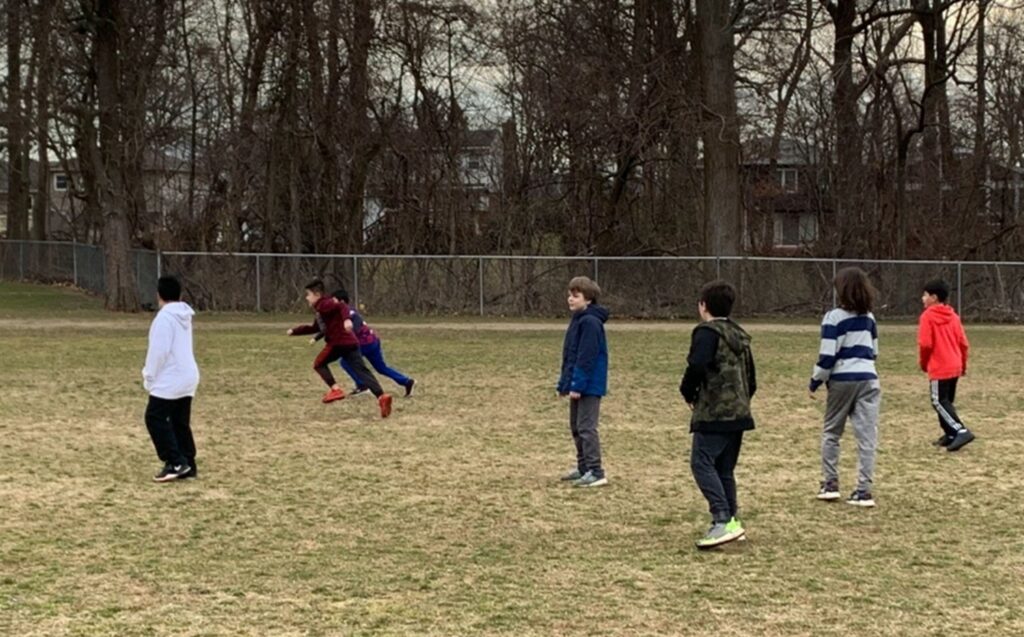Ask most elementary students what their favorite school activity is, and they will most likely respond “RECESS”! And as Physical Educators, we can, and should, serve in making recess the best possible experience for our students. Why? Because we are the movement experts. We know all about the importance of play, and we can serve our school community by sharing our expertise with everyone.
The benefits of recess (particularly unstructured recess) are well documented. The CDC defines recess as “a regularly scheduled period in the school day for physical activity and play that is monitored by trained staff or volunteers. During recess, students are encouraged to be physically active and engaged with their peers in activities of their choice, at all grade levels, kindergarten through 12th grade.” SHAPE America (in conjunction with the CDC) created this recess planning guide to help schools ensure that recess is designed with the best interests of the students’ in mind.

The Benefits of Recess
So what are some of the benefits of recess? Here are just a few as outlined by the CDC:
- Increasing their level of physical activity.
- Improving their memory, attention, and concentration.
- Helping them stay on-task in the classroom.
- Reducing disruptive behavior in the classroom.
- Improving their social and emotional development (e.g., learning how to share and negotiate).
Ask the children, and they will say that recess is fun! They get to play with their friends, go outside, enjoy the break from classroom tasks, and let off steam. And if recess is provided before lunch, the benefits are even greater. According to Action for Healthy Kids, “Schools that have adapted this model (recess before lunch) report that students eat more fruits and vegetables, drink more milk, waste less food, and are better behaved on the playground and classroom.”
How Can Physical Educators Enhance Recess?
So what can we do as Physical Educators to enhance our students’ recess experiences?
Here is a short list to help you get started:
1. Teach students games they can play on their own during PE time. I liked doing this at the beginning of the school year to help set the children up for success. Share these games and activities with the people who supervise recess. It is helpful for the adults outside to have a full understanding of the games so they can help if conflicts arise.
2. Provide recess equipment or help advocate for equipment – a variety of balls, jump ropes, cones and playground chalk will go a long way. We kept our equipment in a shed, and each grade level was responsible to clean up after their recess time ended.
3. Teach and review playground safety with students, especially with playground structures such as monkey bars. You might be surprised to see how many students don’t know how to safely drop from a height! Here is a tutorial we created to address this – it was shared with parents, teachers, and paraprofessionals. Monkey Bar Safety
4. Speak with stakeholders about the importance of having recess before lunch. It might take some time and planning, but it is well worth the effort.
5. Check in on students! If you don’t have recess duty, take some time to go outside occasionally to see how recess is going.
6. Review activities in PE. Review recess games and etiquette throughout the year as needed.
Favorite Recess Activities:
One of the favorite games for the little children was “Punchinello in the Shoe”. This is a cute circle game where the child in the middle gets to make up a dance/movement that the others copy, all while singing the song “Punchinello” together. Watch this clip to see the kids in action: Punchinello in the Shoe

Our older students really enjoyed playing hopscotch, and we taught them 2 versions (recreational and competitive). Giving the kids options really helps with their engagement and enjoyment during recess. Here is a quick tutorial on competitive hopscotch. Hopscotch
Here are some more recess games that we taught our students in 2020-21. None of these use equipment, so they are simple to organize and play. We shared these activities with classroom teachers and paraprofessionals as well. This helped eliminate confusion during recess, and also allowed the classroom teachers to use them for movement breaks throughout the day.
12 Recess Games Students Will Love:
- Red Light Green Light 1 2 3 (Tutorial, Kids playing)
- Giant Step, Mother May I (Tutorial)
- Rock Paper Scissors! (Tutorial, Kids playing)
- Mirror Mirror (Tutorial)
- Hopscotch (Tutorial: Level One, Tutorial: Level Two, Kids Playing: Level Two)
- Follow the Leader (Tutorial)
- What time is it Mr. Fox? (Tutorial, Kids playing)
- Punchinello in the Shoe (Tutorial, Kids Playing)
- Four Square Switch (Tutorial with kids playing)
- Going to Kentucky (Tutorial, Kids Playing)
- Looby Loo (Tutorial, Kids Playing)
- Shadow Tag (Tutorial)
Teach Recess Activities Students Love!

In addition to these simple games and activities, we would ask our students what games and sports they enjoyed playing. Once we had a list (ie: wall ball, soccer, tag games, etc.), we established some school-wide rules. This was a great way to reduce arguing during recess. For example, we taught simple basketball games, such as HORSE and Around the World. The children could play those games, as well as little pick-up games. Choice + clear rules = joyful recess!
As Physical Educators, we are tasked with creating movement experiences that will benefit all of our students, and this includes helping to create a positive environment for them at recess. I hope that this blog will be beneficial to you and your entire school community!





One Response
I hear “free choice” but is it problematic to create recess zones and rotate classes through different play zones each week? One challenge we have is resources. We have 4 basketball hoops, but dozens and dozens of students who want to play. We’ve tried making hoops for each grade level (1st-5th) but inevitably some grade gets left out or too many want to play. If we rotated which classes get basketball during the week, it would allow more students to play… torn on this issue!